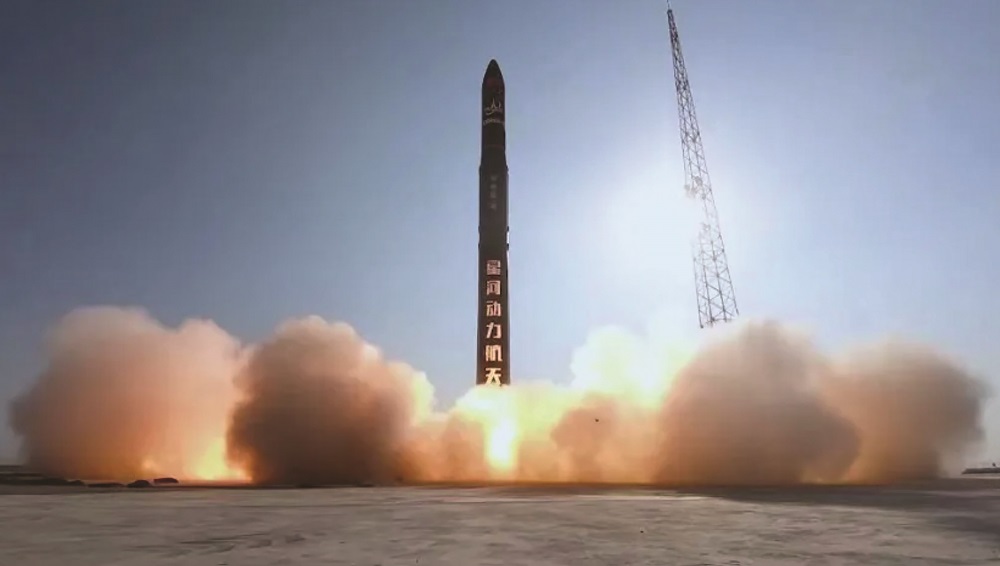Products You May Like
China has experienced an explosion of commercial space companies since 2014, driven by the government opening up the space sector to private capital.
According to Chinese publication Future Aerospace, there were 141 registered commercial aerospace companies in China by the end of 2018, in areas including launch, propulsion, satellite manufacturing, payloads and applications and ground stations. And investor enthusiasm for these space companies continues to rise.
2020 saw investment of $933 million (6 billion Chinese yuan) in China’s commercial aerospace sector, more than three times the $296 million in 2019, according to Chinese data platform Tianyancha.
A trend is developing toward fewer but larger funding rounds. Major rounds in 2020 were remote sensing firm Changguang Satellite ($375 million), launch companies Landspace ($175 million), iSpace ($173 million) and Galactic Energy ($21.5 million), as well as satellite communications startups Commsat ($38 million) and Galaxy Space, which announced in November that it had completed a new funding round resulting in a new valuation of $1.2 billion. The latter pair of rounds followed a government decision to add “satellite internet” to a list of “new infrastructures” as Beijing sets out its new priorities.
Such figures put China behind only the U.S. in terms of overall equity investment globally in space companies. Space Angel’s Space Investment Quarterly Q4 2020 Report states that the United States is responsible for 47 percent ($84 billion) of about $177 billion of investment from 2011 to present, with China making up about 29 percent ($52 billion).
Thomas Colvin, a researcher at the Institute for Defense Analyses’ Science and Technology Policy Institute (STPI), notes however that while equity investment numbers for China may seem large, their meaning is unclear.
The IDA released a 2019 report which found that funding comes from private venture capital, local and nation investment funds, individuals, state-owned enterprises (SOEs), academic institutions like the Chinese Academy of Sciences, and banks.
“Government-backed equity investments are qualitatively different from VC investments in the United States,” says Colvin. Apparent state involvement may bring disadvantages.
“A Chinese company that receives equity investment from government sources may not be afforded the ability to take risks and innovate — as would a company that receives venture capital investment from a Western VC firm — because the company may be expected to repay its local government or state-owned enterprise investors in the near future,” Colvin explains. “Shorter turnaround times may inhibit companies from taking a longer-term outlook.”
A closer look at the sources and effectiveness of equity funding for Chinese space companies is required before comparisons with U.S. venture capital investments can be made fairly, says Colvin.
Many Chinese launch firms have first pursued simpler, light-lift solid rockets before moving onto potentially reusable liquid launchers— a trend which may be a reflection of the above.
Satellite internet projects and subsequent plans such as those of automaker Geely for a constellation of satellites for navigation enhancement and connectivity for autonomous driving, could provide precious opportunities for commercial launch firms that can prove reliable and cost effective, as well as downstream markets.
Colvin says Chinese entrepreneurs are also looking to foreign investment. Often, though, the interest is in foreign investors’ connections to other space companies and their understanding of customers and markets. “This is as or more valuable than the money itself,” Colvin said, quoting a company official STPI interviewed for its report.
China’s commercial space sector growth has been frenetic in its early days. But a concentration of funding and policy guidance from Beijing suggests a constellation of core activities and major players — though firms are yet to deliver on visions and promises — is taking shape.
Greater possibilities may be on the horizon, just as the International Space Station and U.S. policy shifts offered a revenue stream beyond satellite launches for SpaceX and others.
China’s space station project, for which China’s human spaceflight office recently opened a call for low-cost cargo transport to and from the orbital outpost, and its International Lunar Research Station concept, could provide opportunities for supporting longer term commercial endeavors. Much will depend on central government decisions on strategic priorities and the role traditional and NewSpace actors can play.
This article originally appeared in the March 15, 2021 issue of SpaceNews magazine.
